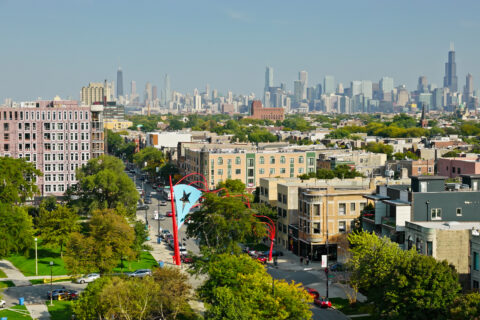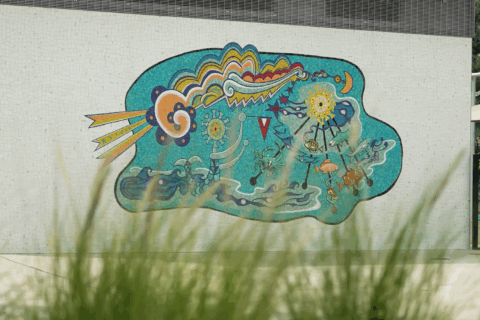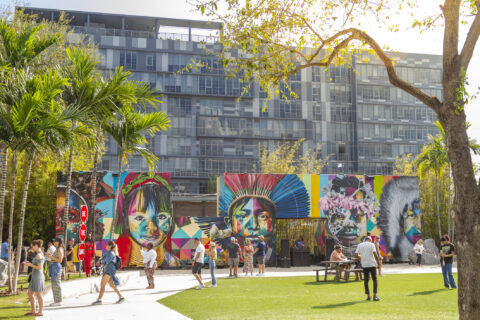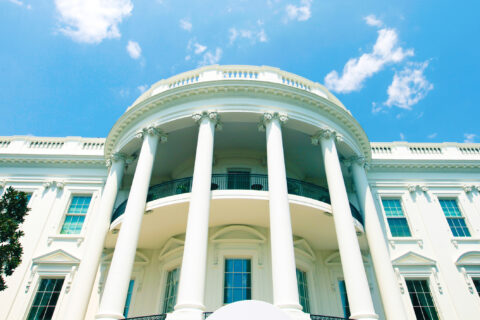Environmental degradation does not impact all residents equally. Marginalized Black, Indigenous and people of color (BIPOC) and low-income residents have been disproportionately affected by environmental degradation, and are also expected to be most vulnerable to future impacts of climate change. Due to historic policies around permitting, exclusionary zoning and more, BIPOC residents across the country are more likely to live near energy facilities, hazardous waste sites and other sources of pollution. Research conducted by the NAACP and Clean Air Task Force found that, in the U.S., Black people are 75% more likely than white people to live in a community near an industrial site and suffer from higher rates of asthma and other negative health impacts as a result.
Environmental justice work seeks to correct these disparities through fair treatment and meaningful involvement of all people when it comes to creating environmental policies. While environmental justice is a newer focus for many governments, as the movement has grown, many cities now recognize it as an important consideration and have taken action to include equity in their sustainability work.
Some local governments have integrated climate and environmental justice into their general sustainability plans, recognizing that as they reduce their carbon footprints, they need to plan for an equitable transition so that the benefits of greener cities are seen by all residents. Cities have also integrated equity into their adaptation plans to help their most vulnerable residents cope with the inevitable impacts of climate change. For example, Baltimore, MD has observed excessive warming in low-income neighborhoods over the past ten years and is now adjusting their Climate Action Plan to address these inequities. As part of NLC’s Cities Connecting Children to Nature Initiative, cities like Louisville, KY and Austin, TX have centered equity as they’ve worked to improve children’s access to nature in target neighborhoods in their cities. Leveraging data and equity indicators, Louisville is siting its new Shawnee Outdoor Learning Center in the neighborhood of West Louisville. Meanwhile, Austin placed its first Green School Park in parts of the city where parks and green spaces were lacking.
Cities have also begun to address environmental justice through dedicated actions distinct from their general sustainability work. Some have published reports or plans dedicated to assessing the state of environmental racism and injustice in their city, then laying out frameworks or strategies to address those inequities. Some city councils have passed legislation to guarantee that environmental justice work will be ongoing, regardless of changes in mayoral administrations and political priorities of the moment.
The city of Philadelphia, PA recently launched a new Environmental Justice Advisory Commission (EJAC), along with an interagency working group on environmental justice, and committed to establish a grant fund for environmental justice and community resilience. The EJAC will provide recommendations to the mayor, city council and government agencies on environmental justice and is made up of a diverse group of commissioners dedicated to advancing equity for frontline communities that have experienced environmental injustice. As the commission begins its work in Philadelphia, Joyce Lee, an inaugural commissioner says, “As my practice focuses on sustainability and health, I will continue to contribute towards equity in outdoor and indoor air, and access to physical activity to help reduce chronic diseases and cumulative impacts in the community.”
An environmental justice commission that advises the city across mayoral administrations, functioning similarly to a planning commission, is a great mechanism for integrating environmental justice into city government priorities in the long term. This structure guarantees that environmental justice work will be a mainstay and allows the work of the commission to develop and mature to meet the needs of the city over many years.
Other cities, including Providence, RI; St. Paul, MN; Seattle, WA and New York City, NY have established similar advisory groups in recent years. Providence has been a leader in incorporating equity into its climate planning. The Providence Racial and Environmental Justice Committee contributed extensively to the city’s Climate Justice Plan Report, which resulted in legislation that codified the report’s equity goals in the city’s legal code. Seattle’s Environmental Justice Committee and New York City’s Environmental Justice Advisory Board also contributed to their city’s respective equity plans and are critical players in implementing those plans by connecting with frontline communities and advising city staff to ensure that city policies are being implemented equitably.
The American Rescue Plan Act (ARPA) and the Bipartisan Infrastructure Law (BIL) provide new opportunities for cities to drive forward their sustainability goals in equitable ways. Through the Justice 40 initiative, the White House has also committed to ensuring that at least 40% of the benefits from climate and clean energy investments are delivered to disadvantaged communities. The White House has created a tool for local leaders to identify disadvantaged communities in their own cities, and is deploying programs across the federal government to help advance this goal.
While climate change has been a focus for cities for years, the need to address it will only accelerate in the coming year. There are ample opportunities for cities to learn from each other’s successful projects and policies to advance sustainability – but now it’s essential that equity become a foundational part of the conversation too. Since environmental justice work is still new for many local governments, opportunities for peer learning between cities are crucial. As cities take advantage of new federal funding opportunities and advance their sustainability goals, it is critical that they do so with an eye for racial justice and equity.









